SÃO PAULO 🇧🇷: Dancing With Chaos [Episode 3.0]
Show notes and track listing from Episode 3.0.
CORNERSTONE EPISODES
8/29/202525 min read
What does a city teach you about momentum, good pain vs. bad pain, and finding your rhythm?
Living in São Paulo is like riding the subway standing up without handrails — to thrive, you don’t fight the sway, you ride with it like a wave..
This is São Paulo’s whisper: happiness isn’t a place or a thing, it’s a pace and motion.
THANK YOU
Valeu demais to my guy Reinaldo–proof that São Paulo doesn’t just hand you pão de queijo, it hands you friends for life.
Thanks also to everyone else who left a voice note: Barbara, Denise, Harumi, Luciana, Marcus, Max, Rafaela, Sherry, Silas, Tassia…with a double thanks to Karen and Kathia, who also helped with translation.
And to the artists below–your music added more soul and texture to this story than I could have done alone. I hope it gives you a little spark of pride in the city you helped define (and most of you are actually from SP, though I cheated a bit and I learned a few of these artists are actually from Rio or Bahia).
Full song list (in order):
Rua Augusta—Emicida
Não Existe Amor em SP—Criolo
Trem Das Onze—Adoniran Barbosa
Toda Menina Baiana—Gilberto Gil
É Tarde Demais—Raça Negra
Sangue Latino—Secos & Molhados
Andar Com Fé—Gilberto Gil
Feijoada Completa—Chico Buarque
São São Paulo—Tom Zé
Felicidade—Marcelo Jeneci & Laura Lavieri
Evidências—Chitãozinho & Xororó
Pé Na Areia—Diogo Nogueira
Sampa—Caetano Veloso
Fim de Semana No Parque—Racionais MCs
Desabafo/Deixa Eu Dizer—Marcelo D2 & Claudia
Magalenha—Sergio Mendes
A Minha Menina—Os Mutantes
Sampa Midnight—Itamar Assumpção
Mineirinho—Só Pra Contrariar
Um Minuto Para o Fim Do Mundo—CPM22
Mas Que Nada—Sergio Mendes & Brasil ’66
Fio Maravilha—Jorge Ben Jor
Vatapá—Dorival Caymmi
Garota Nacional—Skank
Aquarela do Brasil—Gal Costa
As Minas De Sampa—Rita Lee & Roberto De Carvalho
Comida—Titãs
Carolina Carol Bela—Jorge Ben Jor & Toquinho
Lança Perfume—Rita Lee & Roberto De Carvalho
Mina do Condominio—Seu Jorge
Pais Tropical—Jorge Ben Jor
O Ritmo Da Chuva—Fernanda Takai & Rodrigo Amarante
(Full transcript below photos)
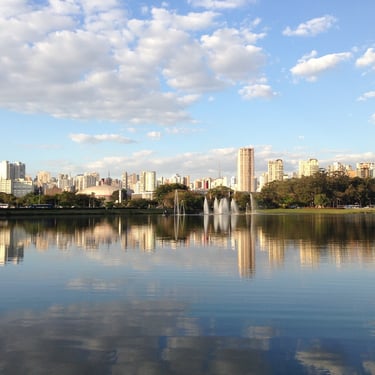
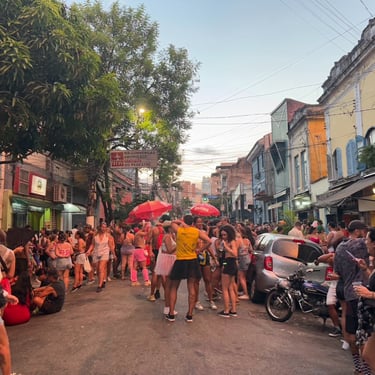
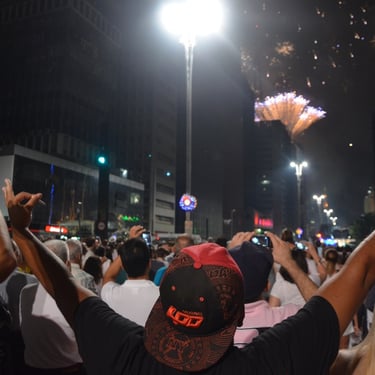
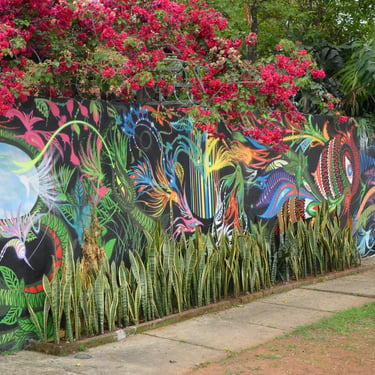
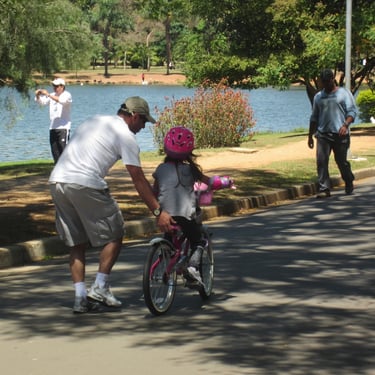
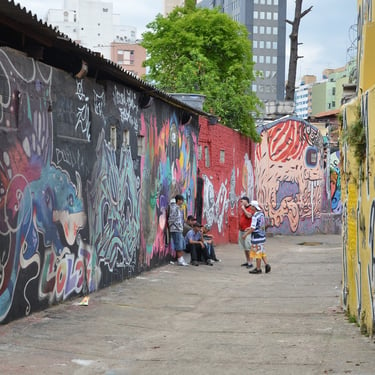
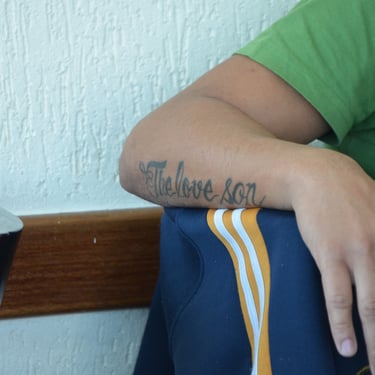
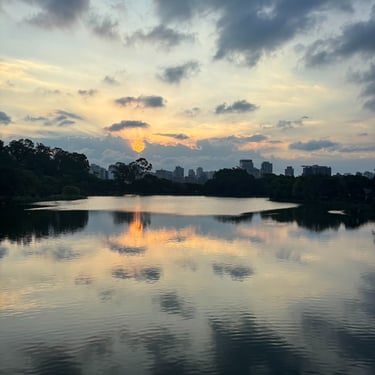
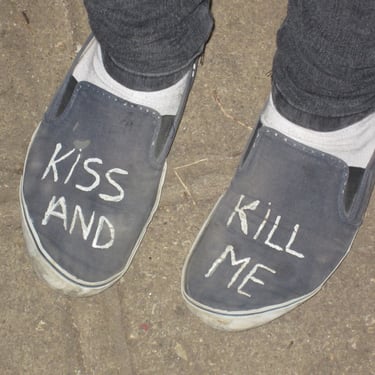
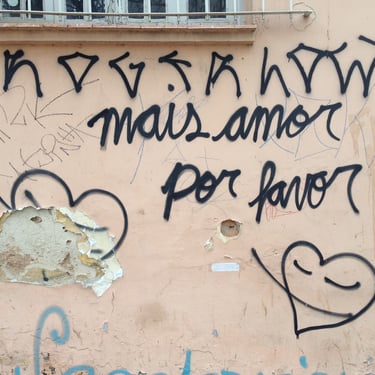
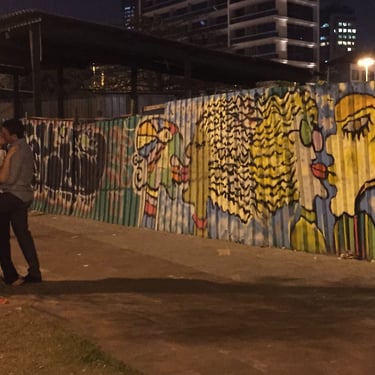
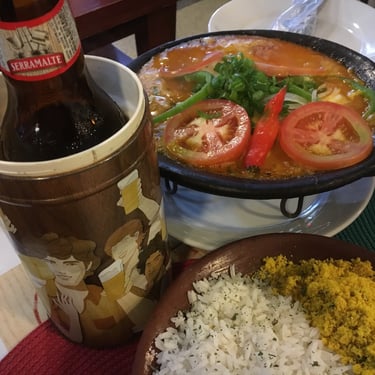
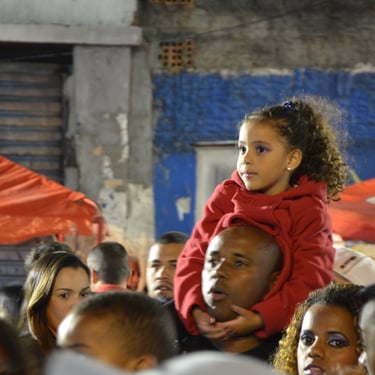
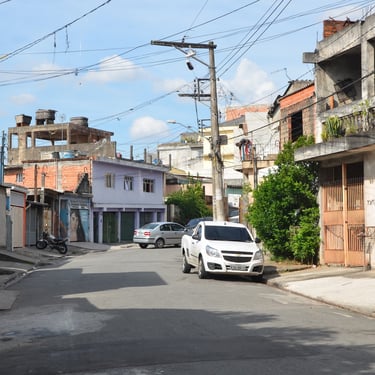
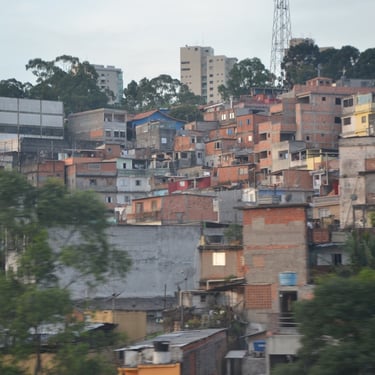
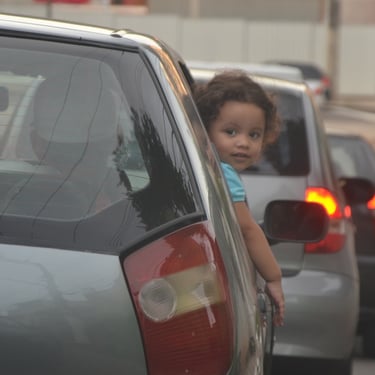
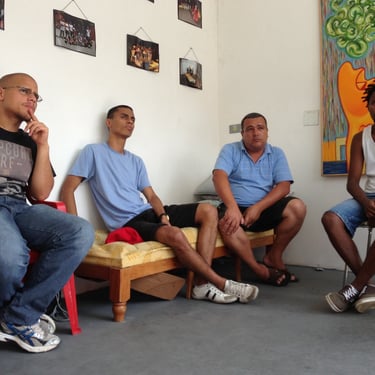
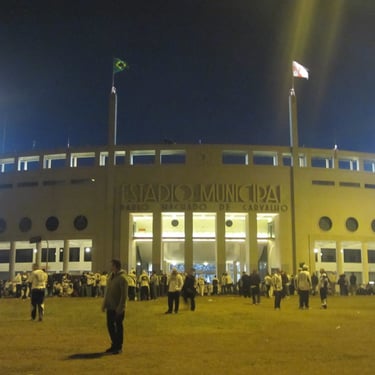
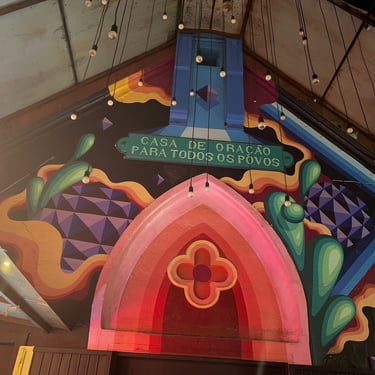
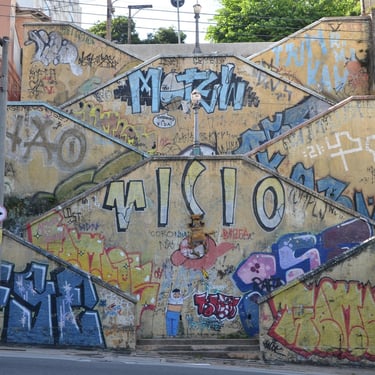
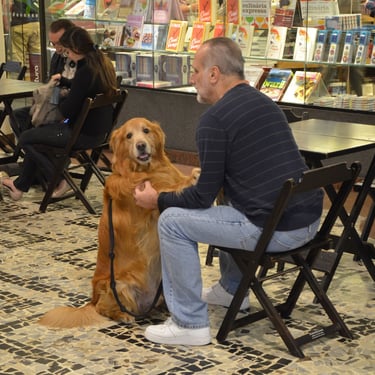
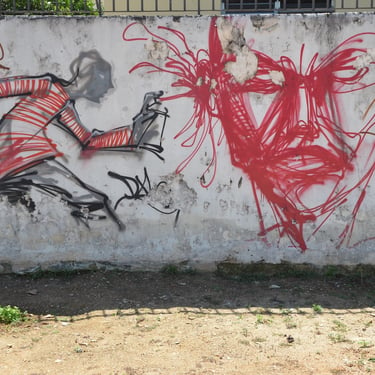
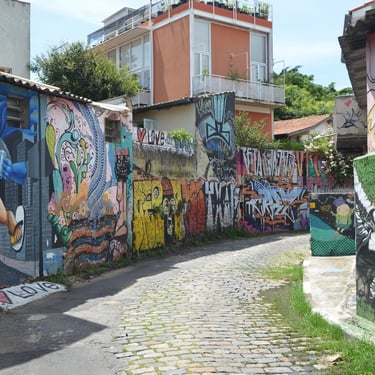
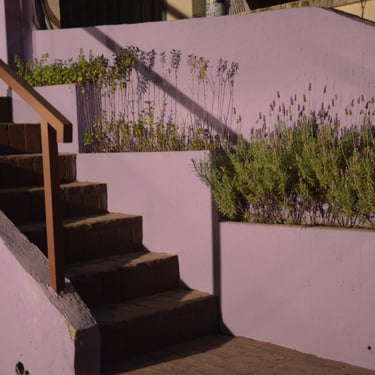
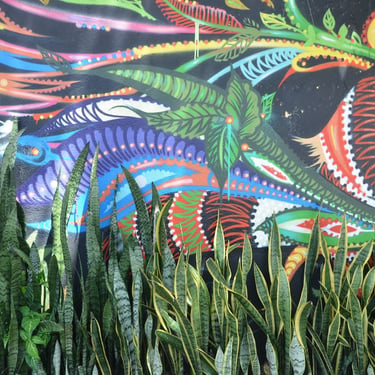
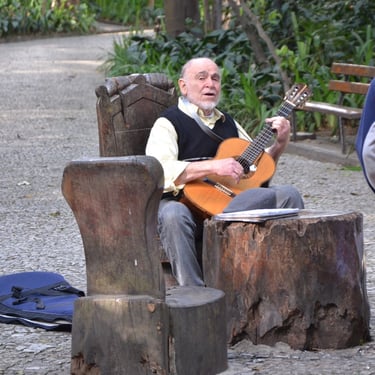
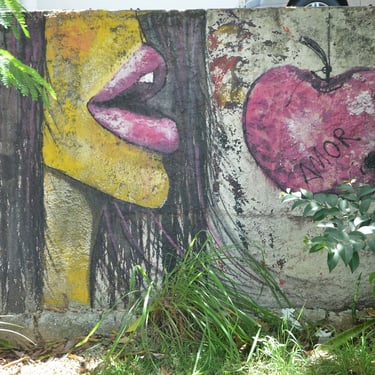
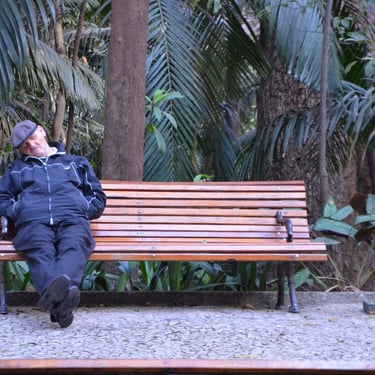
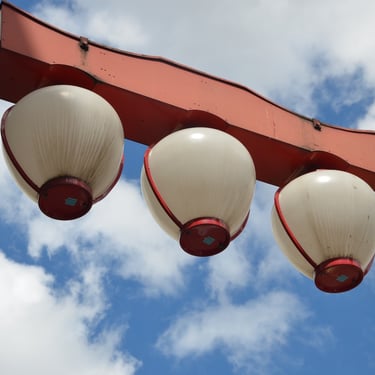
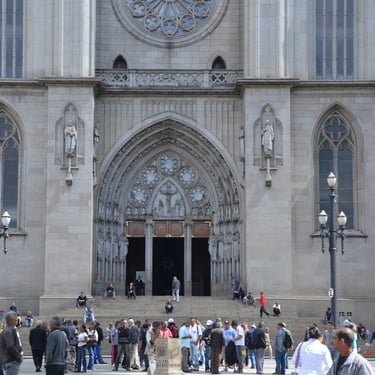
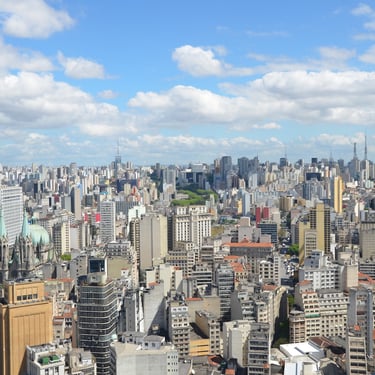
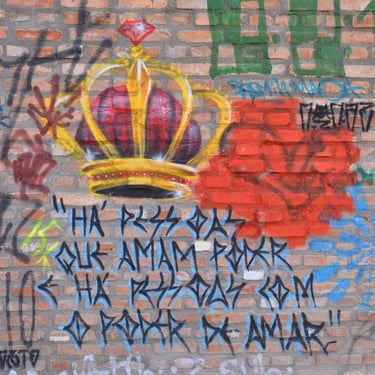
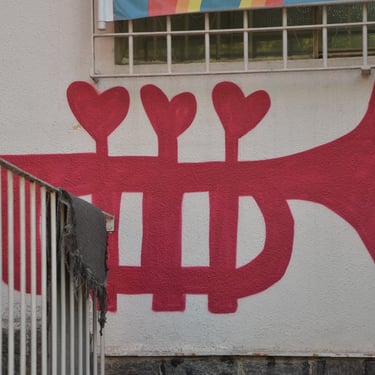
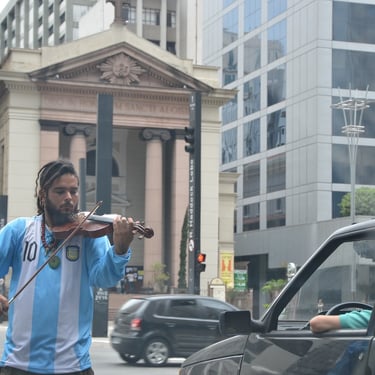
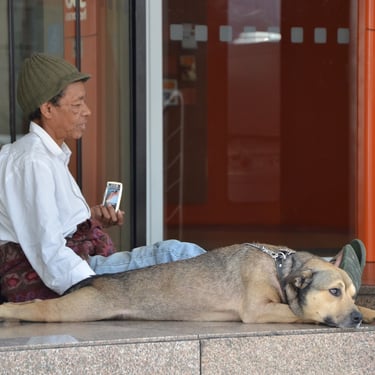
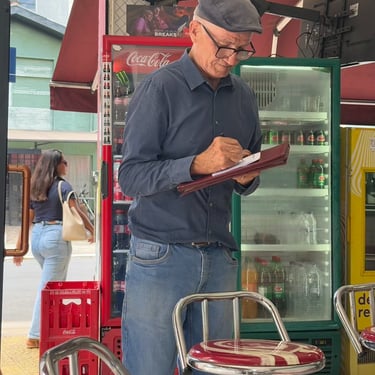
(gun cocks)
This was my introduction to São Paulo: wrong bus, wrong street, wrong time, wrong guy. A Glock-17, cocked, pressed cold against the back of my skull.
So you may be wondering, why am I still here?
This is EveryCity Whispers — a podcast about what cities teach the folks who live in them. I’m Steven, I’ve lived in five countries across five continents, and for a while, one of them was Brasil—in São Paulo—a city whose whisper comes with a percussion section and doesn’t wait for you to find the beat.
I’m bigger than average, and kind of ethnically… ambiguous…depending on the angle of the sun, whatever hairstyle I’m rocking at the time…all the things. So people rarely mess with me. What they don’t know—to my benefit—is that I also feel bad about killing even a bug. When I see one in the house, I’ll spend 15 minutes trying to capture it in a little glass jar to escort it outside safely. There are hardasses, and waaaay on the other end of the spectrum, there’s me.
And yet, I’m still here to tell this story…because that story (gun) never happened.
It might as well have, because I had heard about it so many times before I ever smelled São Paulo’s diesel-plus-coffee air. The moment I told anyone I was coming, they painted the picture. I could see it perfectly. It’s like I had already lived it in my head, and maybe that fueled my sense of defiant adventure as a brash 25-year-old seeing the world for the first time.
I wasn’t thinking this deeply at the time, but once you’ve already imagined the worst, life feels easy by comparison. There’s some stoicism for you.
But no, I didn’t get robbed in São Paulo. I felt at home from my first minutes here—without a word of Portuguese and utterly unable to communicate. I came to learn two things very quickly in São Paulo: the buses don’t slow down for you… and if I keep my mouth shut, nobody knows I’m not a local.
Several years later, I’d get a chance to live here—for less than a year, but plenty long enough for something to become clear: living in São Paulo is like riding a train without handrails.
And here’s the question: what if life isn’t about holding on for dear life, but about letting go and learning to stand without holding on at all?
***
"Living in São Paulo can be wonderful and horrible at the same time. The largest economy in Latin America has much inequality, and all the sad things that come with it. You see humanity at its best and at its worst. When you first arrive, São Paulo looks suffocating, with lots of buildings blocking the horizon. The polluted air, the smell of the Tiete River, all the cars stuck in traffic. The noise. But when you get closer, you can see that each district you pass by has its beauty."
"I came here to answer what São Paulo means to me, what it goes through, and how I define the city. I use that rule that São Paulo is indeed a concrete jungle, but even though it's interpreted that way, we still have plenty of entertainment possibilities that the city offers. The city is also rich in opportunities, even because it is the city that never stops and I define the city as chaotic and cozy at the same time, and I don't see myself anywhere else, other than in São Paulo."
"I would describe São Paulo as a financial capital of Latin America, where culture meets contrast. So, you can find people from everywhere. You accept people from everywhere. At the same time, the contrast is huge. You can feel the city as a tough place to live but, at the same time, you fall in love with the city, and the people that make the city such a vibrant place to live. I’m from São Paulo, I love São Paulo. I would recommend everybody to go there and hang out with people from there. It’s amazing."
"We have a very rich and diverse culture because there are people coming from all parts of Brazil and all over the world. If you take a walk on Avenida Paulista you’ll hear different accents, different languages. You’ll see people coming from all sorts of cultural, social, and economical backgrounds. Some looking busy, cranky, and late. Others more laid back, just sightseeing. I love the neighborhood where I live because everything I need is within walking distance. Grocery stores, pharmacies, gyms, bakeries, hospitals, shopping malls, parks, gardens, great bars and restaurants, street markets, museums. And there are also subway stations and bus stops if I need to go further."
***
When I decided I was coming to São Paulo the first time, the very first piece of advice I got was: don’t take the public bus from the airport.
Which is exactly why I took the public bus from the airport.
Nowadays there’s a train from Guarulhos. Back then, you had two options: the local bus to Tatuapé station on the red line… or the tourist bus to the city center for a few reais more. I wanted every last centavo for pão de queijo—Brazilian cheese bread—so I took the local.
Before I left, someone also told me to carry two wallets—one for me, and one for the guy robbing me.
I didn’t get robbed. I did get an older guy helping me rack my luggage on the bus, sticky humid air fogging the windows, and the kind of warm Portuguese chatter that I couldn’t understand at all but somehow found comforting. The whole ride was about an hour and felt less like something to endure and more like a welcome.
That was my first São Paulo lesson: the fear we carry with us is almost always heavier than the danger itself. I was expecting a battlefield. Instead, I got an invitation to dance, so long as I could be adaptable enough to keep up. If I got robbed of anything on that bus, it was the duffel bag full of assumptions I came with—and the bus shook loose.
And to my great fortune, that bus practically dropped me off on top of a pão de queijo cart at Tatuapé. The bag the lady handed me was so fresh it burned my fingers, and introduced me to a theme I’d come to learn over and over in São Paulo: you might get knocked around a bit, maybe even burned, but this city will also hand you something warm and wonderful when you least expect it.
Need proof? Not too long after, there was a girl. We took a weekend trip to Paraty, and somewhere between the 10-hour traffic jam of a bus ride and fresh passionfruit caipirinhas at a bar literally called Drinks com Cachaça, she started calling me gordinho e gostoso – loose translation: ‘chubby and delicious.’
I pretended to take offense—she was basically calling me her soft little snack—but somehow, I didn’t hate it. And honestly, between the cheese bread and the feijoada, she wasn’t wrong.
That nickname stuck with me in a way I didn’t expect–partly because it taught me to stop taking myself too seriously, and partly because it came to remind me that in São Paulo, the real trick isn’t keeping your balance…it’s in laughing when you lose it. And in that weekend I started to lose a fixed image of myself that I’d probably been clutching onto since high school.
That weekend in Paraty loosened something in me. I’d come to Brazil carrying two wallets–one for me, one for the guy who would rob me—but with the bus ride, the caipirinhas, the ridiculous nickname…it dawned on me that the extra wallet wasn’t just for muggers. It was for all the things I thought I had to protect about myself.
I had assumed—just like you probably would have too—that the extra wallet was a symptom of paranoid fear. But now I see it as a symbol of adaptation.
Here’s the thing about São Paulo: sooner or later, you will lose something here. Your bus will pull away before you’re on it. Your favorite bar will close without warning. Your phone might disappear from your pocket.
"Welcome to the World Cup Semifinal of 2014…Brazil vs. Germany…"
You may lose the most anticipated World Cup match in 50 years…in humiliating fashion...
I was in Brazil to watch this, not at the stadium, but with a bunch of Brazilians, and I can attest first-hand what a dark moment it was. And yet, they went to work the next day.
And whatever you lose—football match or that second wallet—that’s just the city’s way of saying “yeah, you lost it. Now, go get another pão de queijo and get on with your day.”
On my second day of work here, I missed my bus by about 10 seconds. I’ve pissed off plenty of bosses before—but not this quickly. Before I could even think about salvaging my first impression or come up with an excuse, a delivery biker sitting nearby tossed me a helmet and motioned for me to hop on. Another time, I was stuck in the fluorescent purgatory of a government office, dealing with a frustrating mountain of visa forms. A complete stranger not only guided me through the process, but handed me a brigadeiro—a little chocolate ball thing—from her lunch bag. Like it was the most normal thing in the world.
These little moments kept happening, and I don’t think it's a coincidence. The system here will frustrate you, the traffic will break you, the rain will drench you and make your laundry all stiff and scratchy…and then, out of nowhere, somebody will hand you a piece of chocolate.
You won’t beat the system in São Paulo. So you learn to dance with it. And whatever ‘L’ you take, there’s always something warm and wonderful around the corner.
I came here carrying two wallets. Turns out, both were for me—one to protect what I needed, and one to teach me what I didn’t.
***
"What to say about my city. It’s the city I grew up in. I like it, very much. I’m in a bit of a crisis with it right now, because security-wise, it’s not the best. Now, it’s really not safe lately. It’s a big city with a lot of opportunities, especially for those who want to make money and succeed. And it’s a city where you can find anything at any time. Because in whichever time it is, you can ask for a delivery, or go to a place to eat something you feel like. So that’s one thing I love about my city, São Paulo. And if you know the city, you can find both the chaos and the peace. I think São Paulo is a little bit of a mixture or a representation of what Brazil is actually, because there’s people from all around Brazil in São Paulo. They are all very welcomed. And why I say it’s a representation of all the people of Brazil is because—I think what makes São Paulo good and welcoming is the people. And we can see the warmth of all around Brazil in São Paulo. We are known for being a more cold and closed people, but you can still find very nice people, to be friends and to help you for whatever you need in the city."
"For me, São Paulo is one of the most important places in Brazil, because São Paulo is the headquarters of everything we can imagine, right? From companies, brands, and art to welcoming people from various parts of the country and the world. We welcome everyone. This whole plural aspect of São Paulo represents and makes it this unique place where people not only go to work, but also to evolve intellectually and experiment new possibilities. So this feeling of plurality or possibilities and everything else for me is what comes to my mind when I think of São Paulo. So I think that São Paulo for me is this: a cluster of possibilities, of people, where anything can happen."
***
Reinaldo is my closest friend in São Paulo—a tall, lanky guy with a huge smile and a small, Kobe-in-his-prime afro. I first met him in Dublin, of all places (I actually think he’s the first person I mentioned on this podcast, back in the pilot). We met through Couchsurfing–I needed a place to stay, and he and his flatmate had a free sofa.
We were both broke at the time, but maybe in different ways. He was studying English, having chosen Dublin because it was the cheapest place he could learn it. I was chasing a startup dream, sprinting and sprinting but with questionable direction.
I had no idea what Reinaldo carried with him across the Atlantic—the history, the hiding, the hunger. To me, he was just a friendly, funny Brazilian guy who always had instant coffee and wore colorful shorts.
But we hit it off. I remember telling him how unexpectedly at home I felt the first time I visited his city. Only years later did I learn that Reinaldo—a native—had to fight for that same feeling of welcome in his own home.
He grew up in the south suburbs—Zona Sul—specifically Parque Santo Antonio, one of the most violent favelas in Brazil at the time.
"The neighborhood where I was born was considered one of the most dangerous places in the world. It’s a neighborhood called Parque Santo Antonio, and there were times when you couldn’t go out to the street to play because it was very dangerous, you know."
And at some point while growing up, he realized he was gay–and what that meant in a place where being open could get you hurt.
"People had so many prejudices."
It wasn’t even safe to be on the street. One afternoon when he was about 8, Reinaldo was playing outside with his best friend. A few minutes later—just after Reinaldo had gone inside—his friend was gone, caught in the crossfire between police and a drug gang.
"Someone often died because of the Drugzilla war that we used to have a lot in my neighborhood. I remember one Sunday, I think I was about 10 years old. We were playing–we used to play in the street with all of the children. And I stopped playing and I went home, and then it started fire. It was a lot of fire. We would whisper inside the home, or we would try to hide under our beds, to avoid the bullets. And my friends, some friends of mine that I was playing with earlier in the street, they were still in the street. At the end of the fight, a lot of people died. I think it was the most hard moment for me as a child. It was seeing some of my friends that were playing in the street earlier that, because of the Drugzilla war…. It was a hell. In that moment, there was a moment that it was really really hell, you know? When I saw that and I experienced some, I just said ‘I don’t want to finish like this, you know?’"
For years, Reinaldo told as few people as possible where he was from. Not because he wasn’t proud of surviving it—but because, for a long time, survival meant staying in the shadows. In most people’s eyes, ‘favela’ meant crime, poverty, danger…all the things they saw on TV.
"So, it was hard to get a job. If you were open about where you used to live."
It wasn’t until years later—after Ireland, after learning English, after landing a white collar job in pharma and moving into a bright apartment downtown—that Reinaldo’s relationship with that word, favela, began to change. And the thing that changed it? Social media, believe it or not…
He explained it to me like this. For the first time, favela residents could show their own lives, and talents, to the world, on their own terms. Not just as subjects in someone else’s news headlines or documentary film, but as the creators. People from other areas—and socioeconomic classes—could see the dance battles, the street food, the makeshift gyms, the music studios. They could see the color, the creativity, the community, and sheer resilience of making something out of almost nothing.
During COVID, that resourcefulness went into overdrive. São Paulo locked down hard, and the favelas—cut off from much of the city—turned inward.
"The pandemic, it was very hard to everyone, many people from our community. And then those people, they had to…here we have a thing like ‘Civida’–I don’t know how to translate it. But when you don’t have the help, you have to make it happen, you know?"
Reinaldo told me how his neighbors started cooking from their kitchens, selling what they made right from the front door. Someone down the street set up a little gym with weights welded from scrap metal. Another guy started fixing fans and radios on his porch. Instead of handing what little money they had to businesses that barely knew they existed, or cared, people kept it moving inside their own streets. And it was survival, sure–but it was also ownership. And almost overnight, new businesses sprang up like weeds through the concrete.
There’s one really interesting one that I was reading about when I was researching for this episode, called Favela Express, about a 20-year-old from Paraisopolis who started a last-mile delivery system for the favela, which had basically been left out of the global e-Commerce networks prior to that.
One weekend, Reinaldo took me back to his hometown. We stopped by the little makeshift bar his late father used to run—just a couple of chairs, a fridge humming in the corner, and a few cold beers. I sat there sipping a long-neck Serramalte, looking out at a narrow street lined with houses painted in whatever colors people had leftover from their last job. I got a haircut for 5 reais from a guy working out of his front porch across the street. Kicked a ball around with some neighborhood kids. Someone pressed a plate of coxinha into my hands—hot, crisp, gone in two bites—before I could even say no. In that moment, I wasn’t an outsider or a guest. I was just another person at the table.
That same feeling exists all over São Paulo, and that’s one of the coolest things about it. Wherever you’re standing, the city pulls you in at your own level. Whether you have a little or a lot, there’s a way to enjoy life here—your own spots, your own rhythm, your own crew.
Maybe that’s why Reinaldo wears his origins as a badge now, not a burden. He doesn’t carry two wallets—one for where he’s from and one for who he is. He carries nothing at all. He’s learned that here, the less you hold onto, the more room you have to grab something new when it swings by. And in São Paulo, it always swings by.
Maybe that’s the thing about this place—it doesn’t ask you to live with just one version of yourself. It asks you to own both: the part you guard fiercely, and the part you’re willing to risk in the name of living. Reinaldo knows both sides. He’s carried them from the favela to Dublin to a high-rise apartment downtown. Somewhere in that journey, he stopped hiding one to protect the other.
I saw both that day in Parque Santo Antonio–the neighborhood he once kept inside like a secret–sitting under the flickering lights in his pop’s old bar, laughing like he’d never left, and knowing he could.
***
"I was born and raised in São Paulo. I've lived in the same place for 30 years, and the feeling that I have for São Paulo is unique. It's a mix of love and hate, because it's a very crowded city, with a lot of traffic. There are many places, you have to wait in a kilometer-long line to get in or to pass, for example in supermarkets, for consultations and exams. Everything is very crowded. But there is also a lot of robberies. The city is dangerous. You have to have certain skills to be able to walk around the city of São Paulo. But with everything, I still love this city because it has many opportunities. It’s a very rich city. It’s a city for those who know how to take advantage of these opportunities. I love the fact that the city never sleeps. You can find everything you need in São Paulo, at any time of the day. Whether it's 8 am or midnight, you can always find what you need, from the pharmacy to a snack in the early morning, after leaving the party. And transportation also depends on the region, of course. Regions further away from the center end up suffering a little from this, but if you are closer to the center, you have absolutely everything, from transportation to food and health. That's what still makes me still love São Paulo."
"I was born in São Paulo. I've always lived in the west side of the city. The message that São Paulo sends is that the city is full of opportunities, which makes many people from other states come looking for job opportunities to improve their lives and often to help both families. The city of Sao Paulo is rich, but the contrast between wealth and extreme poverty is visible; just walk down the street and you will see this total imbalance. Success for those who come to São Paulo is uncertain and not guaranteed, but expectations are promising. The city of São Paulo represents plurality, diversity, representation, strength, and resistance. We have several movements that share these characteristics, such as the LGBT pride parade. It takes place annually and is the largest in the world. I would define São Paulo as the largest metropolis in Brazil, the economic heart of the country, and one that is diverse in culture, art, and gastronomy. It is a city that is on the move and needs to constantly seek evolution. There are people who want to live by the rules of the past and don't accept that times have changed. Everything has changed, but we need to evolve and understand that we are diverse, plural, we have to accept others, respect others, I believe that is the way. And here are my words about the great São Paulo."
"São Paulo is a noisy, busy and welcoming city. It represents our home, the diversity of people, cultures, genders, and different opinions. It’s a combination of everything."
***
A few months ago, I landed in São Paulo for Carnaval thinking I’d just slip back into the city like I’d never left. Drop my bags, find my friends, ease into the weekend. Instead, I got off the metro and marched, unknowingly, straight into my first bloquinho.
One second I was underground in stale train air, and the next I was in a wall of drums, whistles, and beer cans crunching under my sneakers. Costumes everywhere—not polished or portrait-worthy, but chaotic and homemade. A man in a suit jacket and no pants danced past me with a plastic saxophone. Someone in a glittered horse mask tried to hand me a caipirinha while I was still hauling my duffel bag over a curb.
This city works—all week, all day, all night. Mondays start fast and don’t let up until Friday night. Deadlines, deals, invoices. People treat time like capital, because it is. But São Paulo also knows you can’t run an engine forever without burning it out. And when the week’s work is done, or when Carnaval comes, the release is immediate and absolute—because Monday is already on the horizon.
At the bloquinhos—street parties—during Carnaval, nobody’s trying to look cool. Nobody’s checking if they’re in step. It’s just noise, sweat, sequins, and bodies moving in whatever direction the rhythm carries them. The point isn’t to look like you’re having fun. The point is to lose yourself in it completely—to go fully ape shit and feel good now—dance badly, sing loudly, and somehow end up three streets over with new friends you’ll never see again.
I kept moving. I had no choice—cars couldn’t get near, Metro exits were one-way only. By the time I had escaped the bloquinho, my shirt was plastered to my back and my legs felt like I’d done a week’s worth of cardio. The music faded behind me, but the city felt louder somehow, like it had pulled me in deeper without asking.
The next night, I found my way to the Sambódromo. Bigger scale, more focused energy, but still raw—just with choreography now. Batarias of hundreds of drummers in perfect sync, row after row of dancers spinning in sequins, catching the floodlights like shards of a disco ball.
This is where you feel the difference between São Paulo and Rio de Janeiro. Rio sells you the fantasy. São Paulo tests your reality. In Rio, Carnaval feels like a stage for the world; in Sampa, it’s a stage for each other.
If Rio is where you perform, São Paulo is where you rehearse until you bleed. And that’s the city in a nutshell: a business town that works itself to the bone, then blows the roof off just to remember it’s alive.
By the end of Carnaval week, I knew the drill. I could ride the current of a bloquinho without swimming upstream, duck into shade–or a bathroom–and find my way home without a map. In São Paulo, you adapt fast—or you miss all the fun.
One particularly hot afternoon, I caught the smell of frying dendê oil that pulled me off course. I’d discovered moqueca when I was living here—a fish stew from Bahia, swimming with that same deep-orange oil (which wink certainly played a part in the “gordinho” chapter earlier).
The scent led me to a small stall halfway down a bright graffiti-filled alley: just a pan of bubbling oil, a folding table, and a woman in a red head scarf dropping fist-sized orbs of dough into the pan. She smiled like I wasn’t a stranger with coins in my hand, but a neighbor stopping by. No rush, no upsell, no “next in line”. Just quiet pride as she handed me an acarajé—hot, crisp, and heavy in my palm—something she must have made a thousand times before, each one with the same care. Nobody sells moqueca in street stalls (and besides, that was the previous night’s dinner anyway), but this hit just the same.
I can’t remember many other times having bought something and feeling like it wasn’t a transaction, but an invitation into a tradition she’d carried a thousand miles from Bahia.
Her son, maybe 8 or 9 years old, darted around while I ate. When I finished, he waved for me to follow, and led me down another alley I’d never noticed before, despite having spent half a year living just a few blocks away—a shortcut to the Metro station that shaved 10 minutes off my walk.
There’s nothing more São Paulo than that. It almost never escorts you to the main entrance. But if you’re paying attention—and if you trust the detour—if you dance with the city’s rhythm… it will always show you the side door.
***
"São Paulo is beauty and danger, chaos and joy. But above all, it’s human energy. People care. They smile, and their positivity is stronger than the city shadow. I love São Paulo."
"My friend, look, I don't know how to define São Paulo. Someone once told me that São Paulo is just like New York. Oh my, New York is just like São Paulo. Well, I don't know, I’ve never been to New York to find out anyway. For me São Paulo is a city with a lot of diversity. There are many beautiful places, but also some places aren't so inviting, right? Let me see, here, beyond the diversity, I believe it is a historic city with many tourist attractions, with a lot of history and art. São Paulo is a rushed city, with a lot of people working. It has a lively night, because it doesn’t stop, so it's a city that is connected 24 hours. That’s the way I see it. But I also think it's a polluted city, not a clean city. So I think that is the definition of São Paulo for me. It’s a historic city, full of diversity, pollution, and a lot of people working."
"I think São Paulo can translate very well what is Brazilian."
"São Paulo has always been a place that people are attracted to. People from around the world came and built a life here. Because of that, São Paulo is a mixture that makes the city unique. There’s endless opportunities that makes anyone who lives here lucky. São Paulo is a place where anything can happen."
"What does São Paulo go through? So many feelings, ranging from extreme joy to the deepest sadness, from peace to chaos. And what does it mean? It means life, sustenance, opportunity, and giving. How do I define the city of São Paulo? Grand, majestic, diverse in every sense and with many opposites, ranging from culture to ignorance, from wealth to poverty, love to hate—all of this fits into this grand city, which is nonetheless wonderful."
***
When I first lived here, I thought I could out-plan this city. Keep everything on schedule. Avoid the chaos. I learned fast—São Paulo is the famous Mike Tyson quote in civic form: "Everybody has a plan until they get punched in the mouth."
This city doesn’t care what you came here carrying. Sooner or later, you’ll drop it just to keep up. I didn’t even notice it happening. One day I was mapping every errand like a military op, the next I was three caipirinhas in at lunchtime—half a bowl of feijoada to spare—practicing my infant-level Portuguese with a bar manager who could’ve been Junior Soprano’s Brazilian twin (I’m not joking, either—I can prove it on the website).
I started waking up earlier—not because I read it in some productivity book, but because people were already out running in Ibirapuera or Aclimação, and I wanted to be running with them.
And once you’re moving, it’s harder to stop. You take the next step while you still have heat in your legs. Now, forward motion isn’t just something I like–it’s the only thing I trust. And when life hits hard, you don’t stop to nurse the bruise—you pivot, keep moving, and figure it out mid-stride.
Whenever I need a reminder of what that looks like, I think of Reinaldo—he’s been doing it his whole life. He doesn’t fight the current. Growing up in the favela taught him to dance with chaos—throw himself in, move through it, change course when he needs to. Take the hit when it’s worth it. He knows you can’t dodge pain, so you make sure it’s the kind that takes you somewhere.
That’s the real shift for me—after living here, pain stopped being something to fear, or avoid, and started being a choice I leaned into. Good pain is dancing until your legs are jelly, or taking a wrong turn that adds two kilometers to your morning run. Bad pain is watching from the curb, telling yourself that you could join in if you wanted to. Once you stop lying to yourself, you realize both are gonna hurt—so you might as well choose the pain that makes you better.
And life’s full of that choice. Running when it’s too hot or too cold hurts. But it’s way worse to watch your health fade because you stayed comfortable. Avoiding the hit just swaps one kind of suffering for another. The difference is whether that suffering is pushing you forward or holding you in place.
That’s what the Stoics were getting at centuries ago—pain isn’t the enemy, and comfort isn’t the prize.
São Paulo doesn’t wait for perfect conditions. The beat drops, the crowd moves, the city shifts, your 9-year-old neighbor shows you a shortcut, and you go with it. Happiness here isn’t a place or a thing—it’s a pace and a delta. You keep moving toward something, even if you’re not exactly sure what it is yet, and you’re alive. You stop, you’re done. People often have the “I’ll be happy when ___” syndrome. But the sooner you figure out that there is no “when”, the sooner you’ll actually be happy.
Living here taught me how to ride life like the subway at rush hour—standing, no handrail, no promise of steady footing. You don’t clutch on tightly and wait for the bumps to stop; you surf. Bend your knees, shift your weight, and keep your balance in motion. I wake up earlier now, I act on ideas–at least take the first step–before I’ve had time to talk myself out of them. I don’t see momentum as a thing that happens anymore, but I treat it like currency—protect it, spend it wisely, and never let it hit zero.
And maybe that’s why I keep coming back to São Paulo. Not for the skyline. Not even for the food. But for the reminder that life’s not supposed to be comfortable—it’s supposed to be lived. You push forward, you take the hits, you find your rhythm.
The rest? The rest doesn’t matter. Reinaldo’s been moving like that since the favela. I’m just trying to keep up.
***
"In general, I think it’s a very interesting city to live, once in a lifetime, because it can be different from anything you’ve seen all over the world. It’s very peculiar I think, very peculiar. But I love my city."
"Depending on where you are, people can be a bit cold at first. But once they get to know you, they can be very warm and friendly. Through the years I’ve learned to make sure I’m safe to celebrate different parts of São Paulo. Beyond the oppression of the concrete, I always find nature trying to express itself in plants, trees, flowers and birds here and there. I love traveling to different cities in Brazil, and in other countries. But I absolutely love coming back home."
***
Bom dia, Steven again…with notes! You know the drill by now–I used all local artists for the music, so big love to them, and I’ll share a Spotify playlist with all the songs I referenced. I actually don’t know if anyone has even looked at one of these, but they’re there, and they’re public, so link in the website. Bigger thanks–obrigado, muito obrigado–to Reinaldo and the other Paulistanos who left me voice notes. I really appreciate it.
I’m still starting out, as you know, and I want to collect as much feedback as I can, so if you have thoughts–good, bad, otherwise–or interesting people that I should talk to in your city–it’s Steven at EveryCityWhispers.com (steven with a ‘V’ as it should be spelled). Actually, I’d love to gather a group of people, sort of like an inner circle or a beta group or however you want to think of it, that I can bounce ideas off of. So if you’d be willing, if you might be willing to help out in that way email me too.
Still playing with format. Planning another “cornerstone” episode next month, on Amsterdam. I haven’t yet decided if I’ll drop a few mini episodes with less production in between. So stay tuned–actually just make sure you’re subscribed and then you’ll know when I do release anything new. I still don’t have a proper cadence yet. My sort of promise, well, aspirational promise, that I’ve been able to deliver so far to myself, is to finish one of these cornerstones each month.
Believe me, I hope I can reach a point where I don’t have to self-promote, but I’m nowhere close to there yet. So, if you like what you heard, please rate this on Spotify, Apple, YouTube, wherever you’re listening…leave a comment if you’re so inclined…please tell a friend. It really makes a BIG big difference.
You can find more information about this episode, and the podcast, at everycitywhispers.com.
Thank you, thank you, thank you for listening to EveryCity Whispers.
A few more weeks to go until Amsterdam, and until then, remember: you don’t have to change cities to move forward. Cities don’t shout. But if you stay curious and listen closely, you’ll hear them.
***
(I couldn't resist sharing an audio recording I made of a soccer (futebol) game on the radio to fade out...I could listen to this all day and all night. 🤣)
TRANSCRIPT
EVERYCITY WHISPERS
EVERY CITY WHISPERS SOMETHING...
CONNECT
© 2025. All rights reserved.
